Malmö
| City of Malmö Malmö stad |
|
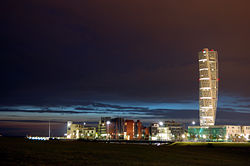 |
|
| Motto: Mångfald, Möten, Möjligheter (Eng.: Diversity, Meetings, Possibilities) |
|
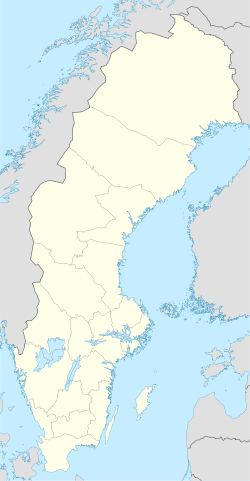 City of Malmö
|
|
| Coordinates: | |
| Country | Sweden |
|---|---|
| Municipality | Malmö Municipality and Burlöv Municipality[1] |
| County | Skåne County |
| Province | Scania (Skåne) |
| Charter | 13th century |
| Area [2][3] | |
| - City | 335.14 km² (129.4 sq mi) |
| - Land | 155.56 km² (60.1 sq mi) |
| - Water | 179.58 km² (69.3 sq mi) |
| - Urban | 71.76 km² (27.7 sq mi) |
| - Metro | 2,535.76 km² (979.1 sq mi) |
| Population (30 June 2008)[4][2] | |
| - City | 282,904 |
| - Density | 1,769/km² (4,581.7/sq mi) |
| - Urban | 258,020 |
| - Urban Density | 3,596/km² (9,313.6/sq mi) |
| - Metro | 628,388 |
| - Metro Density | 247.81/km² (641.8/sq mi) |
| Time zone | CET (UTC+1) |
| - Summer (DST) | CEST (UTC+2) |
| Website: Official site | |

Malmö IPA: [ˈmalːˌmøː] is the third most populous city in Sweden, situated in its southernmost province of Scania.
Malmö is the seat of Malmö Municipality and the capital of Skåne County. Malmö is also a bimunicipal locality,[1] as part of it is Burlöv Municipality. The total population of the urban area was 258,020 by the end of 2005, of which 9,108 were in Burlöv.
The administrative entity for most of the city is Malmö Municipality which has 283,000 inhabitants in eight different localities.
Greater Malmö, one of Sweden's three officially recognized Metropolitan areas and since 2005-01-01 defined by the municipality of Malmö and 11 other municipalities in the southwestern corner of Scania,[5] has a total population of 628,388 by June 30, 2008.[4] The region covers an area of 2,535.76 km2.[3] The municipalities included, apart from Malmö, are Burlöv, Eslöv, Höör, Kävlinge, Lomma, Lund, Skurup, Staffanstorp, Svedala, Trelleborg and Vellinge. Lund, with a municipal population of over 100,000 and home to one of Scandinavia's major universities, is together with Malmö the region's economical and educational hub.
Malmö was one of the earliest and most industrialized towns of Scandinavia, but until the turn of the millennium had been struggling with the adaptation to post-industrialism. Since then, Malmö has become a new city, with impressive architectural developments, attracting new biotech and IT companies, and particularly students through Malmö University.
The city contains many historic buildings and parks, and is also a commercial center for the western part of Scania. During the last few years a university college (University College of Malmö) has been established and the city is now trying to focus on education, arts and culture. Malmö was ranked #4 in Grist Magazine's "15 Green Cities" list in 2007.[6]
Contents |
History
Malmö is thought to have been founded in the year 1275, as a fortified quay or ferry berth of the Archbishop of Lund, some 20 km to the north-east. It was, for centuries, Denmark's second biggest city. Its original name was Malmhaug (with alternate spellings), meaning "Gravel pile".


In the 15th century, Malmö became one of Denmark's largest and most frequented cities, reaching a population of approximately 5,000 inhabitants. It became the most important city around The Sound, with the German Hanseatic League frequenting it as a marketplace, notable for its flourishing herring fishing. During that time, the city arms were granted in 1437 by King Eric of Pomerania. It was based on Eric's own arms from Pomerania: an argent with a griffin gules. It gave the griffin's head to Malmö, eventually this extended to the entire province of Scania.
In 1434, a new citadel was constructed at the beach south of town. This fortress, known today as Malmöhus, did not get its current appearance until the mid-16th century. Several other fortifications were constructed, making Malmö Sweden's most fortified city, but only Malmöhus remains.
Lutheran teachings became popular during the 16th century, and Malmö was one of the first cities in Scandinavia to fully convert (1527-29).
In the 17th century, Malmö and the Scanian region (Skåneland) came into Swedish possession. This happened following the Treaty of Roskilde, signed in 1658. Fighting was not yet over, however; in June 1677, 14,000 Danish troops laid siege to Malmö for a month, but were unable to conquer the Swedish troops holding it.
By the dawn of the 18th century, Malmö had about 2,300 inhabitants. However, due to the wars of Charles XII of Sweden and plague epidemics, the population dropped to 1,500 by 1728. The population did not grow much until the modern harbour was constructed by the late 18th century. The city started to expand, and in the year 1800 had 38,054 inhabitants.[7]
Malmö would greatly benefit from the Swedish southern railway line, constructed 1850-70, as it gave a significant boost to industry. In 1840, the Kockums shipyard was founded. The industry dominated Malmö for the next 150 years.
In 1870, Malmö overtook Norrköping to become Sweden's third most populated city. By 1900, Malmö had strengthened this position with 60,000 inhabitants.

Malmö continued to expand through the first half of the 20th century. The population had swiftly increased to 100,000 by 1915 and to 200,000 by 1952. Kockums shipyard was Malmö's largest employer, and one of the largest shipyards in the world. By 1971, Malmö reached 265,000 inhabitants, but this was the peak which would stand for more than 30 years. Not long after, Sweden experienced a recession that struck especially hard on the industrial sector; shipyards and manufacturing industries were hard hit, which led to high unemployment in many cities of Scania. Kockums shipyard closed down in the mid-eighties, depriving the city of its greatest employer as well as a major factor in Malmö's image of itself (the old shipyard area is now used by Malmö Högskola). In addition, many middle class families moved into one-family houses in surrounding municipalities such as Vellinge Municipality, Lomma Municipality and Staffanstorp Municipality which profiled themselves as the suburbs of the upper middle class. To counter this, at the end of the 1990s Malmö undertook a program of redeveloping attractive seafront quarters in the now largely disused south-western harbour; a city architecture exposition (Bo01) was held in 2001. The new apartment buildings and villas created for it have become the core of a new city district, aimed at the urban middle-class and with attractive waterfront vistas.
By 1985, Malmö had lost 35,000 inhabitants and was down to 229,000. However, the toughest difficulties were yet to emerge. Between 1990-95, Malmö lost about 27,000 jobs, and its economy was seriously strained.
However, thanks to several government-funded projects, Malmö started to emerge as its current modern incarnation by 1995. Malmö has the highest proportion of individuals of non-Scandinavian extraction of any Swedish city. It remains a city of sharp social divide and high unemployment.[8][9][10]

Geography
Malmö is located at 13°00' east and 55°35' north. Its location in southernmost Sweden makes it closer to the Italian city of Milan than to the northernmost Swedish town Kiruna.
Malmö is part of the transnational Oresund Region and since 2000 the Oresund Bridge crosses the Oresund strait to Copenhagen, Denmark. The bridge was inaugurated July 1, 2000, and measures 8 kilometres (the whole link totalling 16 km), with pylons reaching 204.5 metres vertically. Apart from the Helsingborg-Helsingør ferry links further north, most ferry connections have been discontinued.

Climate
Malmö, and the rest of Scania has oceanic climate. Despite its northern location, the climate is relatively mild compared to other locations in similar latitude, or even somewhat further south, mainly because of the Gulf Stream. Because of its northern location, daylight extends 16 hours in midsummer, to around 8 hours in midwinter.
Summers are warm and pleasant with average high temperatures of around 21°C (70°F) and lows of 13°C (55°F), but temperatures do sometimes exceed 25°C (77°F+) and occasional heatwaves are common during the summer. Winters are cold, with temperatures of -2 to 4°C (28 - 40°F), and is similar to New York City's.
Precipitation is moderate throughout the year, and snowfall is occurs mainly in December thru March, but snow covers does not remain for a long time.
| Jan | Feb | Mar | Apr | May | Jun | Jul | Aug | Sep | Oct | Nov | Dec | Year | |
|---|---|---|---|---|---|---|---|---|---|---|---|---|---|
| Mean daily maximum temperature (°C) | 2 | 2 | 5 | 10 | 16 | 20 | 21 | 21 | 17 | 12 | 7 | 4 | 11.4 |
| Mean daily minimum temperature (°C) | -3 | -3 | -1 | 2 | 7 | 11 | 13 | 12 | 10 | 7 | 3 | -1 | 4.8 |
| Mean total rainfall (mm) | 49 | 30 | 40 | 38 | 41 | 52 | 61 | 58 | 59 | 57 | 61 | 58 | 603 |
| Mean number of rain days | 17 | 13 | 14 | 12 | 12 | 12 | 14 | 13 | 14 | 15 | 17 | 16 | 169 |
Transport
Oresundtrains cross Øresund Bridge every 20 minutes connecting Malmö to Copenhagen, and the Copenhagen Airport. Also some of the X2000 and Intercity trains to Stockholm, Gothenburg, and Kalmar cross the bridge, stopping at Copenhagen Airport.
In March 2005, digging began on a new railway connection called the City Tunnel. The tunnel will run from under Malmö Central Station to Triangeln continuing to Hyllievång (Hyllie Meadow), where it will emerge to connect with the Oresund Bridge, effectively changing Malmö Central from being a terminus to being a transit station.
Beside the Copenhagen Airport, Malmö has an airport of its own, Malmö Airport, today chiefly used for low-cost carriers, charter flight routes, and domestic Swedish destinations.
The motorway system has been incorporated with the Oresund Bridge; the European route E20 goes over the bridge and then, together with the European route E6 follows the Swedish west coast from Malmö–Helsingborg to Gothenburg. E6 goes further north along the west coast and through Norway to the Norwegian town Kirkenes at Barents Sea. The European route to Jönköping–Stockholm (E4) starts at Helsingborg. Main roads in direction of Växjö–Kalmar, Kristianstad–Karlskrona, Ystad, and Trelleborg start as freeways.
Municipality
Malmö Municipality is an administrative unit defined by geographical borders, consisting of the City of Malmö[12] and its immediate surroundings.
The Malmö urban area, Malmö tätort with 258,020 inhabitants (2005), consists of the urban part of the municipality together with the small town of Arlöv in the municipality of Burlöv. Both municipalities also include smaller urban areas and rural areas, such as the suburbs of Oxie and Åkarp. Malmö tätort is to be distinguished from Malmö stad (The city of Malmö), which is a semi-official name of Malmö Municipality, although this terminology appears counterintuitive to many locals.
Demographics
After 1971, Malmö had 265,000 inhabitants, the population then dropped to 229 000 by 1985.[13] It then began to rise again, and had passed the previous record by the January 1, 2003 census, when it had 265,481 inhabitants.[14] According to models, the population will continue to increase to an estimated 301,600 inhabitants by 2013.[15] There were 75,156 people, or 27% of the municipal population, born abroad as of 2007.[16] The largest groups of immigrants have arrived from:[17]
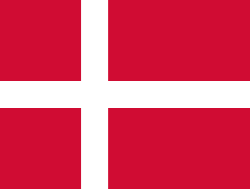 Denmark (8,857)
Denmark (8,857) Former Yugoslavia (8,658)
Former Yugoslavia (8,658)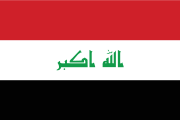 Iraq (7,975)
Iraq (7,975) Poland (6,314)
Poland (6,314) Bosnia-Herzegovina (5,725)
Bosnia-Herzegovina (5,725)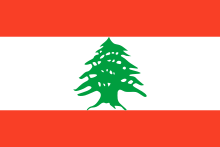 Lebanon (3,392)
Lebanon (3,392) Iran (3,041)
Iran (3,041) Hungary (1,856)
Hungary (1,856) Germany (1,822)
Germany (1,822)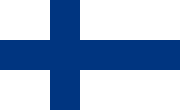 Finland (1,694)
Finland (1,694) Afghanistan (1,673)
Afghanistan (1,673)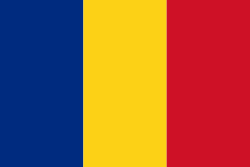 Romania (1,640)
Romania (1,640) Turkey (1,589)
Turkey (1,589)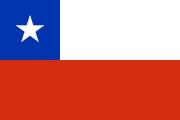 Chile (1,329)
Chile (1,329) Vietnam (1,167)
Vietnam (1,167)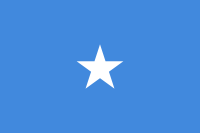 Somalia (1,037)
Somalia (1,037) Republic of Macedonia (947)
Republic of Macedonia (947) Norway (847)
Norway (847)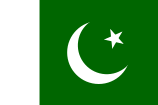 Pakistan (806)
Pakistan (806) Croatia (754)
Croatia (754)
As of 2005, Malmö had the third-highest proportion of foreign-born residents of any municipality in Sweden.[18]
There were 171 different nationalities represented in Malmö in 2007.
Segregation
Malmö is one of the most segregated cities in Europe, with most migrants along the Inre Ringvägen ringroad, from the northeast suburb of Malmö, Arlöv (Burlöv Municipality), to the southern parts, with areas lika Lindängen and Hermodsdal. A quarter of the residents in the neighbourhood Rosengård are Muslim, and there are fears that they could become an underclass.[19]
Crime
The rates of personal robbery in Malmö is four times higher than in neighbouring Copenhagen and the capital city of Sweden Stockholm though Malmö only has a quarter of the population.[20]
More than half of Swedbank's 12 bank offices in Malmö were robbed during 2008.[21]
Economy
The economy of Malmö was traditionally based on shipbuilding (Kockums) and construction related industries, such as concrete factories. The region's leading university, along with its associated hi-tech and pharmaceutical industries, is located in Lund about 16 km to the north-east. As a result, Malmö had a troubled economic situation following the mid-1970s. Between 1990-1995, 27,000 jobs were lost, and the budget deficit was more than one billion Swedish krona. In 1995, Malmö had Sweden's highest unemployment rate.[22]
However, during the last few years there has been a revival. The main contributing factor have been the economic integration with Denmark brought about by the Oresund Bridge. Almost 10% of the population in Malmö works in Copenhagen, Denmark. Also the university college (Malmö Högskola) founded in 1998 and the effects of integration into the European Union have contributed.
Malmö still has comparatively high unemployment figures, particularly among the ethnically and socially diverse areas in the eastern and southern parts (See Malmö's suburbs). In 2004, the rate of wage-earners was 63%, compared to 74% in Stockholm and 71% in Gothenburg.[23]
As of 2005, the largest companies were:[24]
- Skanska – house construction: 3,025 employees
- ISS Facility Service AB – hospital service, cleaning, etc: 1,725 employees
- Sydkraft – electricity: 1,025 employees
- Sydsvenskan – newspaper: 1,025 employees
- Pågen – bakery: 975 employees
Education
Malmö has the country's eighth largest school of higher education with the university college Malmö Högskola established in 1998. It has 1,300 employees and 21,000 students (as of 2003).
In addition, the venerable Lund University (established in 1668) has some education located to Malmö:
- Malmö Art Academy (Konsthögskolan i Malmö)
- Malmö Academy of Music (Musikhögskolan i Malmö)
- Malmö Theatre Academy (Teaterhögskolan i Malmö)
- The Faculty of Medicine, which is located in both Malmö and Lund.
The UN World Maritime University is also located in Malmö. The World Maritime University (WMU)[25] operates under the auspices of the International Maritime Organization (IMO), a specialized agency of the United Nations. WMU thus enjoys the status, privileges and immunities of a UN institution in Sweden.
Culture
A striking depiction of Malmö was made by Bo Widerberg in his engaging debut film Kvarteret Korpen (Raven's End) (1963), largely shot to the shabby Korpen working-class district in Malmö. With humour and tenderness it depicts the tensions between classes and generations. The movie was nominated for an Academy Award as Best Foreign Language Movie in 1965.
In 1944, one of the city's most enduring cultural hubs was inaugurated, namely the Municipal Theatre, with several stages (the main stage is the most expansive theatre room in Sweden) and a repertory, then as now embracing both stage theatre, opera, musical, ballet, musical recitals and theatrical experiments. In the 1950s, Ingmar Bergman was the Director and Chief Stage Director of the place and made it one of the most vital scenes of the nation; many of the people he would bring to stardom in his sixties movies he encountered here (for example Max von Sydow and Ingrid Thulin). Later stage directors include Staffan Valdemar Holm and Göran Stangertz.
Since the 1970s the city has also been home to a rich, if fluctuating, array of independent theatre groups and some show/musical companies. It also hosts a rich rock/dance/dub culture; in the 1960s The Rolling Stones played the Klubb Bongo, and in recent years stars like Morrissey, Nick Cave, B. B. King and Pat Metheny have made repeated visits.
The Rooseum Center for Contemporary Art, founded in 1988 by the Swedish art collector and financier Fredrik Roos and housed in a former power station which had been built in 1900, was one of the foremost centers for contemporary art in Europe during the 1980s and 1990s. By 2006, most of the collection had been sold off and the museum was on a time-out; the future of the museum foundation and the house are still undetermined.
The Opera of Malmö (Malmö Opera och Musikteater) is well-known in Sweden and a wide range of operas, musicals and plays have been performed there.
Architecture
The oldest parts of Malmö were built between 1300-1600 during its first major period of expansion. The central city's layout as well as some of its oldest buildings are from this time. Many of the smaller buildings from this time are typical Scanian two story urban houses that show a strong Danish influence.
Recession followed in the ensuing centuries. The next expansion period was in the mid 19th century and led to the modern stone and brick city. This expansion lasted into the 20th century and can be seen by a number Jugendstil buildings for which the city is known. Malmö was one of the first cities in Sweden to be influenced by modern ideas of functionalist tenement architecture in the 1930s. Around 1965, the government initiated the so called Million Programme, intending to offer affordable apartments in the outskirts of major Swedish cities. But this period also saw the reconstruction (and razing) of much of the historical city center.
Recent years have seen a bolder more cosmopolitan architecture. Västra Hamnen (The Western Harbor), like most of the harbor to the north of the city center, was industrial. In 2001, however, its reconstruction began as an exclusive, albeit secluded, urban residential neighborhood. The 500 dwelling units are extremely unique and inventive and most were part of the exhibition Bo01. The exhibition had two main objectives: develop self-sufficient housing units in terms of energy and greatly diminish the phosphorous emissions. Among the new buildings towers the Turning Torso, a spectacular twisting skyscraper, 190 metres (623 ft) tall, the majority of which is residential. It quickly became Malmö's new landmark within Sweden.[26][27]
Other sights
The beach Ribersborg in the western harbour, is a man-made shallow beach, stretching along Malmö's coast line. Despite Malmö's chilly climate, it is sometimes referred to as the "Riviera of the North" or the "Swedish Riviera." It is the site of Ribersborgs Kallbadhus, an open air bath opened in the 1890s, where people go swimming all year round, braving the icy waters after a hot sauna in wintertime.
The long boardwalk at The Western Harbour has become a new favourite summer hang-out for the people of Malmö and is a popular place for bathing.
Events
In the third week of August each year a festival, Malmöfestivalen, fills the streets of Malmö with different kinds of cuisines and events.
BUFF, the International Children and Young People's Film Festival in Malmö, takes place every year in March.
Malmö was also the host of the Eurovision Song Contest 1992, after Sweden won it the previous year.
Nordic Games Conference, one of the most important events in game development industry, takes place in Malmö every May The event consists of conference itself, recruitment expo and game expo and attracts hundreds of gamedev professionals every year.
Media
Sydsvenska Dagbladet, founded in 1870, is since 2000 Malmö's only full-size daily newspaper, and also one of its larger employers (see section #Economy). It has an average circulation of 130,000. Apart from Sydsvenskan, there are few media companies in the city, though a number of free-of-charge papers, generally dealing with entertainment, music and fashion have local editions (for instance City, .SE, Rodeo, Metro and Nöjesguiden). There are regional Scanian TV and radio broadcasts; these do however serve most of Scania, and are also attained on the other side of the strait.
Sports

The most popular football team in Malmö is Malmö FF, in the top-level Allsvenskan. They had their period of glamour in the 1970s and 1980s, when they won the league several times. In 1979, they advanced to the finals of the European Cup, now the UEFA Champions League. Then followed some meager years, until they in 2004 won the Allsvenskan again. This is also where Zlatan Ibrahimović started his professional football-career.
The second most notable team is Malmö Redhawks, in ice hockey. They were the creation of a millionaire and quickly rose to the highest rank in the 1990s. Malmö also got an American football team Limhamn Griffins they have won the Swedish national championship in American football three times 1993,1994 and 2007.
Twinning cities
As of 2006[update], Malmö has town twinning treaties or treaties of co-operation signed with 11 cities. Of these, co-operation is closest with Newcastle, Tallinn, province of Chieti and Vaasa.
The complete list of cities is the following:[28]
 Province of Chieti, Italy, co-operation treaty signed in 2001.
Province of Chieti, Italy, co-operation treaty signed in 2001. Florence, Italy, twin towns since 1989.
Florence, Italy, twin towns since 1989.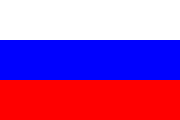 Kaliningrad, Russia, co-operation treaty
Kaliningrad, Russia, co-operation treaty Newcastle, United Kingdom, co-operation treaty signed in 2003.
Newcastle, United Kingdom, co-operation treaty signed in 2003.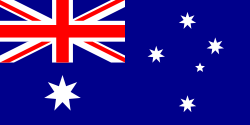 Port Adelaide, Australia, twin towns since 1988.
Port Adelaide, Australia, twin towns since 1988. Stralsund, Germany, twin towns since 1991.
Stralsund, Germany, twin towns since 1991. Szczecin, Poland, twins towns since 1990.
Szczecin, Poland, twins towns since 1990. Tallinn, Estonia, twin towns since 1989.
Tallinn, Estonia, twin towns since 1989. Tangshan, China, twin towns since 1987.
Tangshan, China, twin towns since 1987. Vaasa, Finland, twin towns since 1940.
Vaasa, Finland, twin towns since 1940. Varna, Bulgaria, twin towns since 1987.
Varna, Bulgaria, twin towns since 1987.
See also
- Oresund Region
- Ports of the Baltic Sea
- List of people connected to Malmö
- Governors of Malmö
References
- ↑ 1.0 1.1 "Tätorter 2005" (in Swedish). Statistics Sweden. Retrieved on 2008-05-15.
- ↑ 2.0 2.1 "Tätorternas landareal, folkmängd och invånare per km2 2000 och 2005" (xls) (in Swedish). Statistics Sweden. Retrieved on 2008-05-15.
- ↑ 3.0 3.1 (Statistics Sweden) Kommunarealer den 1 January 2008 (excel-file, in Swedish) Municipalities in Sweden and their areas, as of 1 January 2008. Retrieved on 2008-10-12.
- ↑ 4.0 4.1 (Statistics Sweden) Folkmängd i riket, län och kommuner 30 juni 2008 och befolkningsförändringar första halvåret 2008 (in Swedish) Retrieved on 2008-10-12.
- ↑ (Statistics Sweden) Storstadsområden (excel-file, in Swedish) Definitions of Metropolitan Areas in Sweden. Retrieved on 2008-10-12.
- ↑ 15 Green Cities | Grist | Main Dish | 19 July 2007
- ↑ Encyclopædia Britannica Eleventh Edition (1911), article Malmö
- ↑ Nordisk familjebok article Malmö.
- ↑ Runeberg, NF, History, start (Swedish).
- ↑ Nationalencyklopedin article Malmö; Encyclopædia Britannica Eleventh Edition (1911).
- ↑ Source: World Weather Information Service.
- ↑ In all official contexts, the town Malmö calls itself "Malmö stad" (or City of Malmö), as does a small number of other Swedish municipalities, and especially the other two metropolitans of Sweden: Stockholm and Gothenburg. However, the term city has administratively been discontinued in Sweden.
- ↑ Nationalencyklopedin, Article Malmö
- ↑ "Malmö stad folkmängd" – City of Malmö website
- ↑ "Befolkningsprognos för Malmö" (in se). Malmö Stad. Retrieved on 2007-12-29.
- ↑ "Malmöbor med utländsk bakgrund" (in se). Malmö Stad. Retrieved on 2007-12-29.
- ↑ "Malmöbor födda i utlandet, 1 January 2008" (in se). Malmö Stad. Retrieved on 2008-08-07.
- ↑ 1: Haparanda Municipality (40%), 2: Botkyrka Municipality (33%) 3: Malmö Municipality (25%), 4:Södertälje Municipality (25%), 5: Huddinge Municipality (22%) (Swedish) MALMÖBOR MED UTLÄNDSK BAKGRUND 1 January 2006. All figures as of 2006.
- ↑ Migration News - Migration Dialogue
- ↑ http://sydsvenskan.se/varlden/article143275.ece
- ↑ http://sydsvenskan.se/malmo/article361909/Ranvag-drabbar-Swedbank-i-Malmo.html
- ↑ City of Malmö website, [1] (Swedish)
- ↑ City of Malmö website [2], in turned based on material from Statistics Sweden
- ↑ Source: City of Malmö website – "Malmös största företag"
- ↑ http://www.wmu.se
- ↑ Arkitekterna som formade Malmö, Tyke Tykesson (1996), ISBN 9172031131
- ↑ Web site Malmö Arkitekturhistoria Arkitekturhistoria, a brief compilation made by Malmö Public Library website. Accessed 19/05 -06. Has a substantial reference section. (Swedish)
- ↑ Malmö city website: Malmö stads vänortssamarbete"(Swedish)
References
- Facts & Figures about Malmö, 2005PDF – in English. From the municipal webpage, PDF format.
- The 2006 demographics from the city's website:[1] (Swedish)
External links
- Malmö City Council - Official Municipal website (English)
- Malmö - Official municipal site (Swedish)
- Mitt Malmö - Malmö city guide with local news, weather forecast, cinemas, TV-guide and current events. (Swedish)
- Malmöfestivalen (English)
- The City Tunnel (English)
- Article Malmö from Nordisk familjebok (1912) (Swedish)
- Satellite image from Google Maps
- "Sweden sticks to multiculturalism" BBC article
| Malmö is one of 133 towns with the historical City status in Sweden. |
|
|||||
|
|||||
